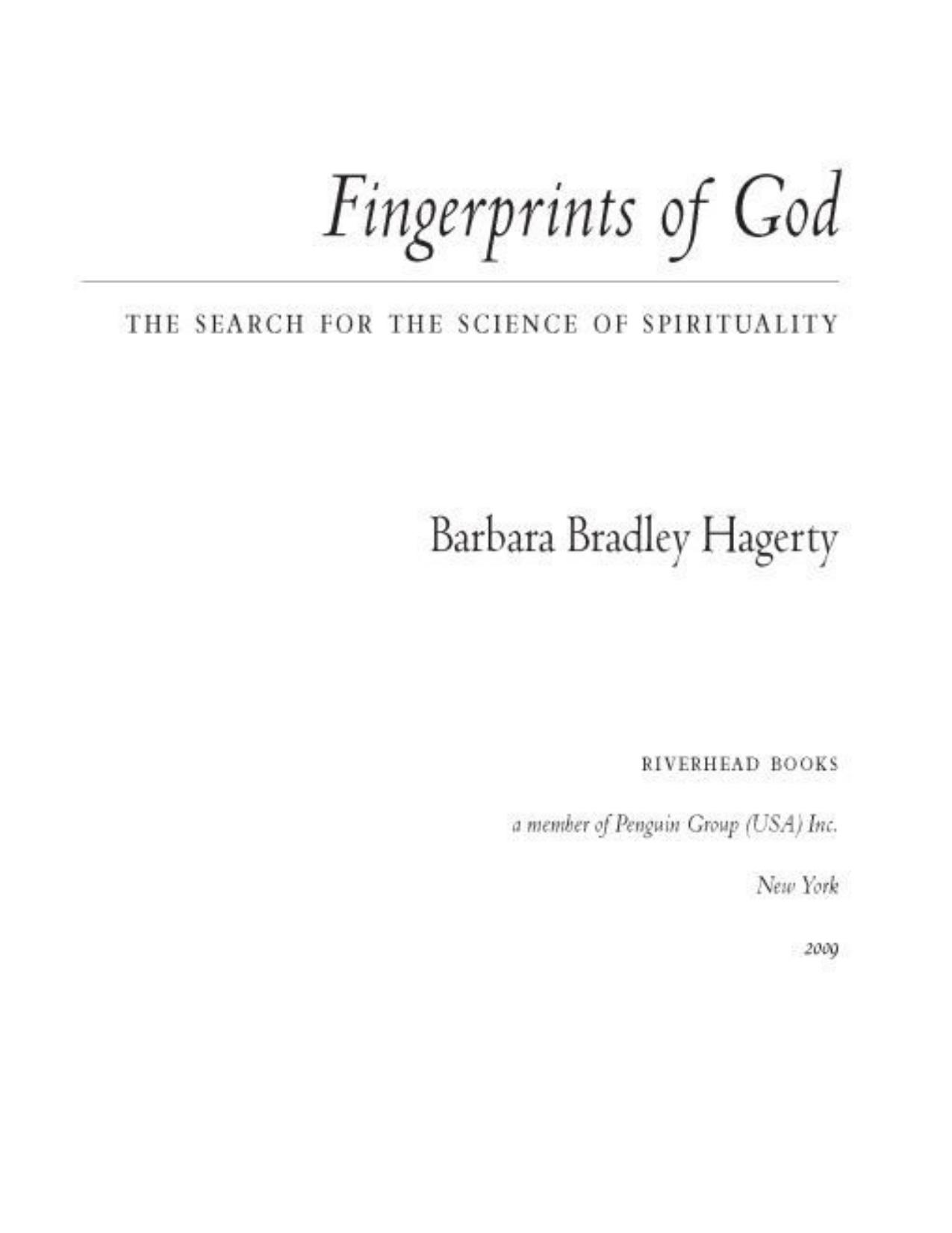Fingerprints of God by Barbara Bradley Hagerty

Author:Barbara Bradley Hagerty
Language: eng
Format: epub, pdf
Publisher: Penguin USA, Inc.
Looking Under the Hood
So far, Newberg has identified two types of virtuoso brains: contemplative brains and rowdy ones. Let’s examine the contemplatives first. For this study, Newberg put Franciscan nuns and Tibetan Buddhist monks (separately, of course) into the brain scanner at the University of Pennsylvania. The “theologies” underpinning these two practices have nothing in common. During their centering prayer—a meditative prayer that emphasizes interior silence—the nuns focused intently on God, and usually on Jesus. During their meditation, the monks nestled into a state of intense awareness, connecting with the underlying reality of life; their belief system excludes a supernatural, external “God.” Yet each group’s descriptions of those transcendent moments bore an uncanny resemblance.
“I felt communion, peace, openness to experience,” Sister Celeste, a charming seventy-year-old Franciscan nun, recalled after emerging from the imaging machine.4 She felt “an awareness and responsiveness to God’s presence around me, and a feeling of centering, quieting, nothingness [as well as] moments of fullness of the presence of God. [God was] permeating my being.”
Now listen to Michael Baine’s words. Baine is a Tibetan Buddhist and a scientist who works with Andy Newberg and became one of the subjects in the study. Baine described his meditation experience as “timeless and infinite.”
“There was an intense feeling of love,” Baine told Newberg. “I felt a profound letting-go of the boundaries around me, and a connection with some kind of energy and state of being that had a quality of clarity, transparency, and joy. I felt a deep and profound sense of connection to everything, recognizing that there never was a true separation at all.”
It sounded to me like two different road trips. One group drives a Lexus through the Redwood Forest, the other takes an Escalade through the Swiss Alps. The vehicles look entirely dissimilar, as does the scenery. But gazing at the giant trees and towering mountains may stir up a similar sense of exhilaration or awe. For Andy Newberg, the question was this: What is going on under the hood? Are the brain mechanics the same for Catholic nuns and Buddhist monks as they experience the transcendent, just as two different cars in two different countries operate along the same mechanical principles?
That is precisely what Newberg discovered when he peered at their brain scans. With both the monks and the nuns, the front part of their brains “lit up” as they focused on the task at hand. Think of the frontal lobes as the chief operating officer of the brain, one with accountant-like tendencies: it handles the details, helps plan and execute tasks, keeps you awake and alert and, above all, focused. It also processes memory and language and other complicated social tasks, such as figuring out how to behave at a cocktail party or how to respond to your spouse or friend or rival at work.
As the Christian nuns focused on God—on a word like Jesus or Elohim that helped them connect to the divine—their frontal lobes shifted into overdrive. Similarly, as the Buddhist monks meditated
Download
Fingerprints of God by Barbara Bradley Hagerty.pdf
This site does not store any files on its server. We only index and link to content provided by other sites. Please contact the content providers to delete copyright contents if any and email us, we'll remove relevant links or contents immediately.
The Lost Art of Listening by Michael P. Nichols(7456)
Why I Am Not A Calvinist by Dr. Peter S. Ruckman(4125)
The Rosicrucians by Christopher McIntosh(3493)
Wicca: a guide for the solitary practitioner by Scott Cunningham(3149)
Signature in the Cell: DNA and the Evidence for Intelligent Design by Stephen C. Meyer(3103)
Real Sex by Lauren F. Winner(2989)
The Holy Spirit by Billy Graham(2917)
To Light a Sacred Flame by Silver RavenWolf(2792)
The End of Faith by Sam Harris(2709)
The Gnostic Gospels by Pagels Elaine(2499)
Waking Up by Sam Harris(2427)
Nine Parts of Desire by Geraldine Brooks(2347)
Jesus by Paul Johnson(2331)
Devil, The by Almond Philip C(2305)
The God delusion by Richard Dawkins(2284)
Heavens on Earth by Michael Shermer(2260)
Kundalini by Gopi Krishna(2153)
Chosen by God by R. C. Sproul(2143)
The Nature of Consciousness by Rupert Spira(2070)
